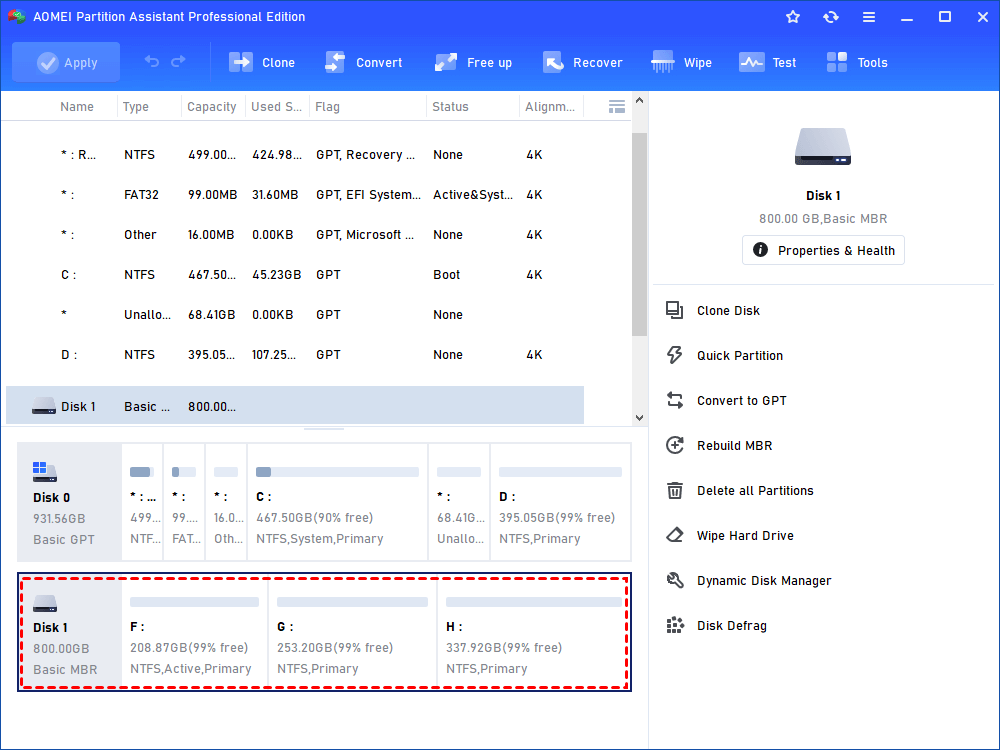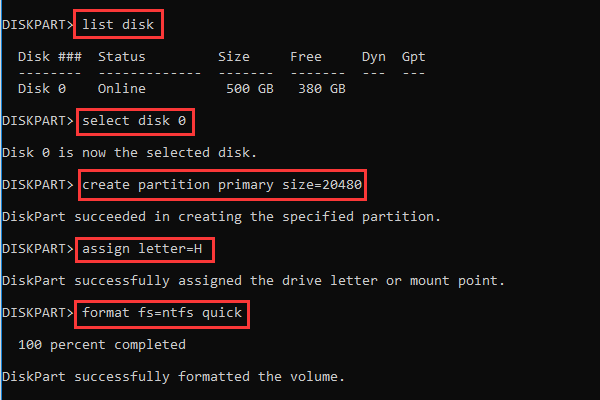
- #Diskpart create boot partition full#
- #Diskpart create boot partition Pc#
- #Diskpart create boot partition windows#
To format the partition as FAT32, type format fs=fat32 quick, and then click ENTER. If your server platform supports Unified Extensible Firmware Interface (UEFI), you should format the USB flash drive as FAT32 rather than as NTFS. To format the partition, type format fs=ntfs quick, and then click ENTER. To select the partition that you just created, type select partition 1, and then click ENTER. To create a new primary partition on the USB flash drive, type create partition primary, and then click ENTER. This command deletes all data from the USB flash drive. Note the drive number or drive letter of the USB flash drive.Īt the command prompt, type select disk, where X is the drive number or drive letter of the USB flash drive, and then click ENTER. The list disk command displays all the disks on the computer. In the new command line window that opens, to determine the USB flash drive number or drive letter, at the command prompt, type list disk, and then click ENTER. Open a Command Prompt window as an administrator. Insert a USB flash drive into a running computer.
#Diskpart create boot partition windows#
Restore or repair your server running Windows Server Essentials
#Diskpart create boot partition full#
Restore a full system from an existing client computer backup
#Diskpart create boot partition Pc#
To create a bootable USB flash drive for use in recovering or reinstalling Windows on a PC instead of a server, see Create a recovery drive.įor additional scenarios in which you may want to create or use a bootable USB flash drive, see the following topics: For information about DiskPart, see DiskPart Command-Line Options. The first step is to prepare the USB flash drive by using DiskPart, which is a command-line utility. You can create a bootable USB flash drive to use to deploy Windows Server Essentials. If you have deleted or lost your dynamic partition that contains your vital data then, click on the link given to know the procedure to perform dynamic partition recovery effectively within a short while.Applies To: Windows Server 2016 Essentials, Windows Server 2012 R2 Essentials, Windows Server 2012 Essentials


For example, the following text file script can be sent to DiskPart to create a new partition:

Users can type the DiskPart commands directly to configure storage, or can script the DiskPart via a text file script to perform multiple commands. It even includes an error handling protocol that users can turn on or off as necessary.Does not operate in a single-line mode instead DiskPart commands are read from standard input / output (I/O).It can be used to convert a basic disk to a dynamic disk, or vice versa.DiskPart command supports the use of scripts to automate its usage.Unlike the Disk Management tool, it facilitates explicit control of partitions and volumes. Also, the UI of the DiskPart is similar to the graphical interface of the Microsoft Management Console (MMC) Disk Management snap-in. It is basically a command-line tool that is equivalent to the Disk Management utility, which is useful in certain situations like when Windows won’t start. It can be used to extend the existing partitions by using the unallocated space displayed in Disk Management.ĭiskPart is more powerful utility than fdisk. It was included by Microsoft in all versions of the Windows NT operating system line from Windows 2000 onwards, which replaces the fdisk which was used in MS-DOS based operating systems. DiskPart is a command-line utility that is used to manipulate, view, create or resize the disk partitions from the command line.


 0 kommentar(er)
0 kommentar(er)
